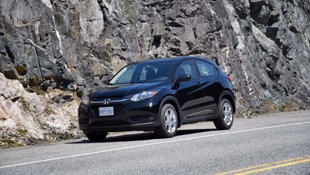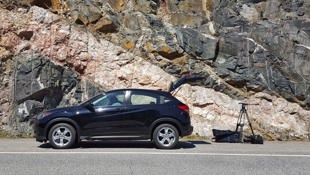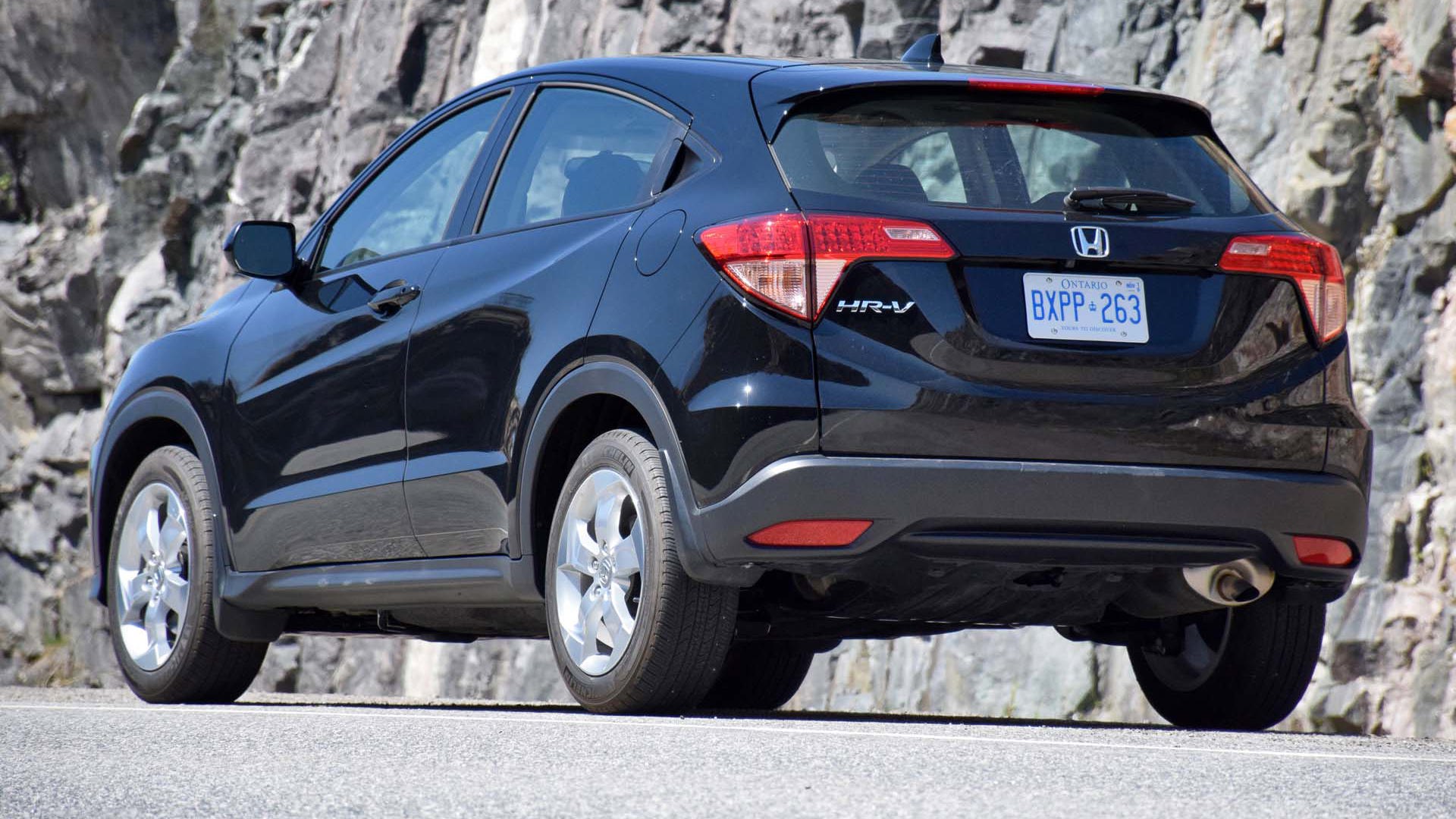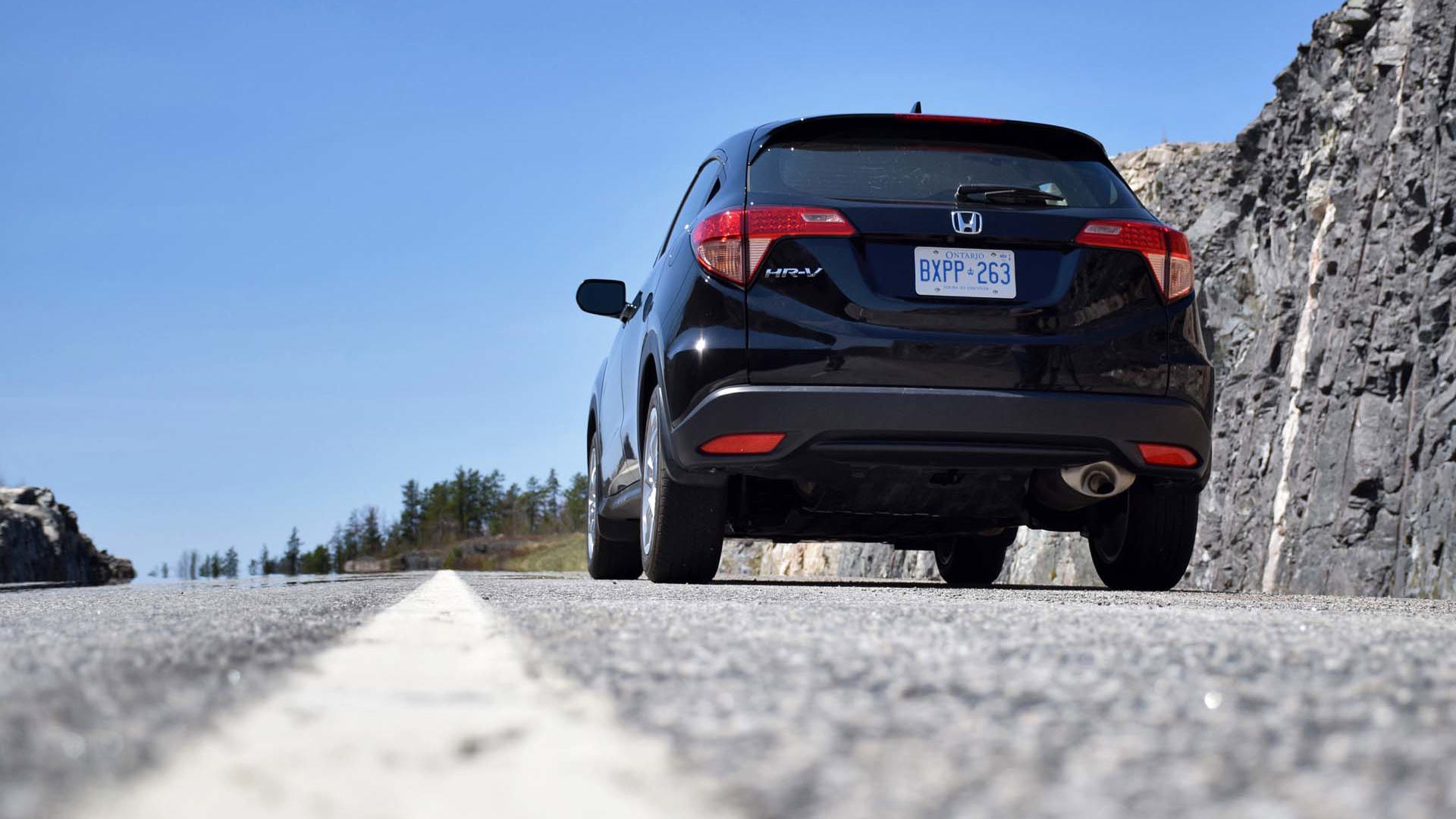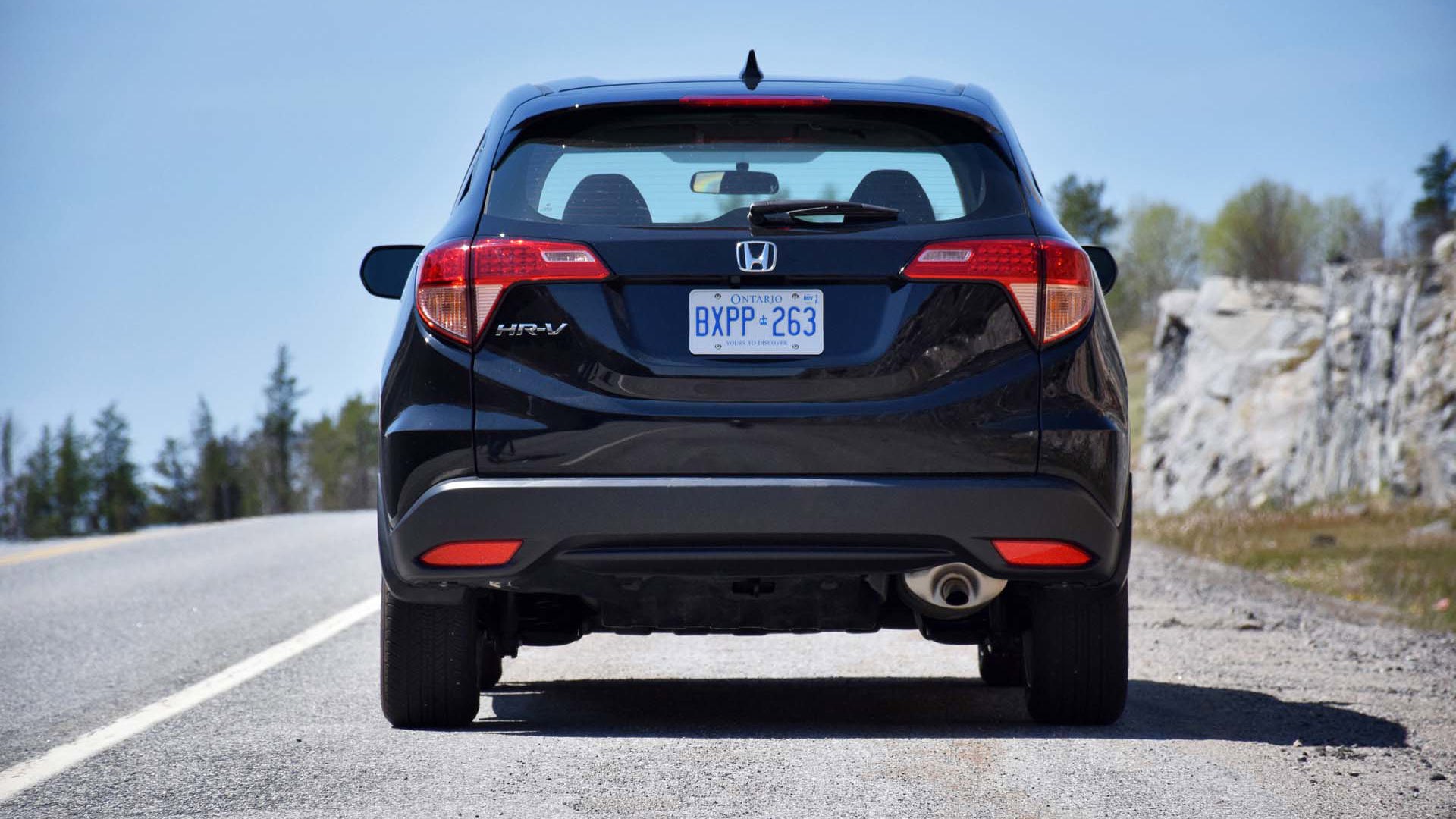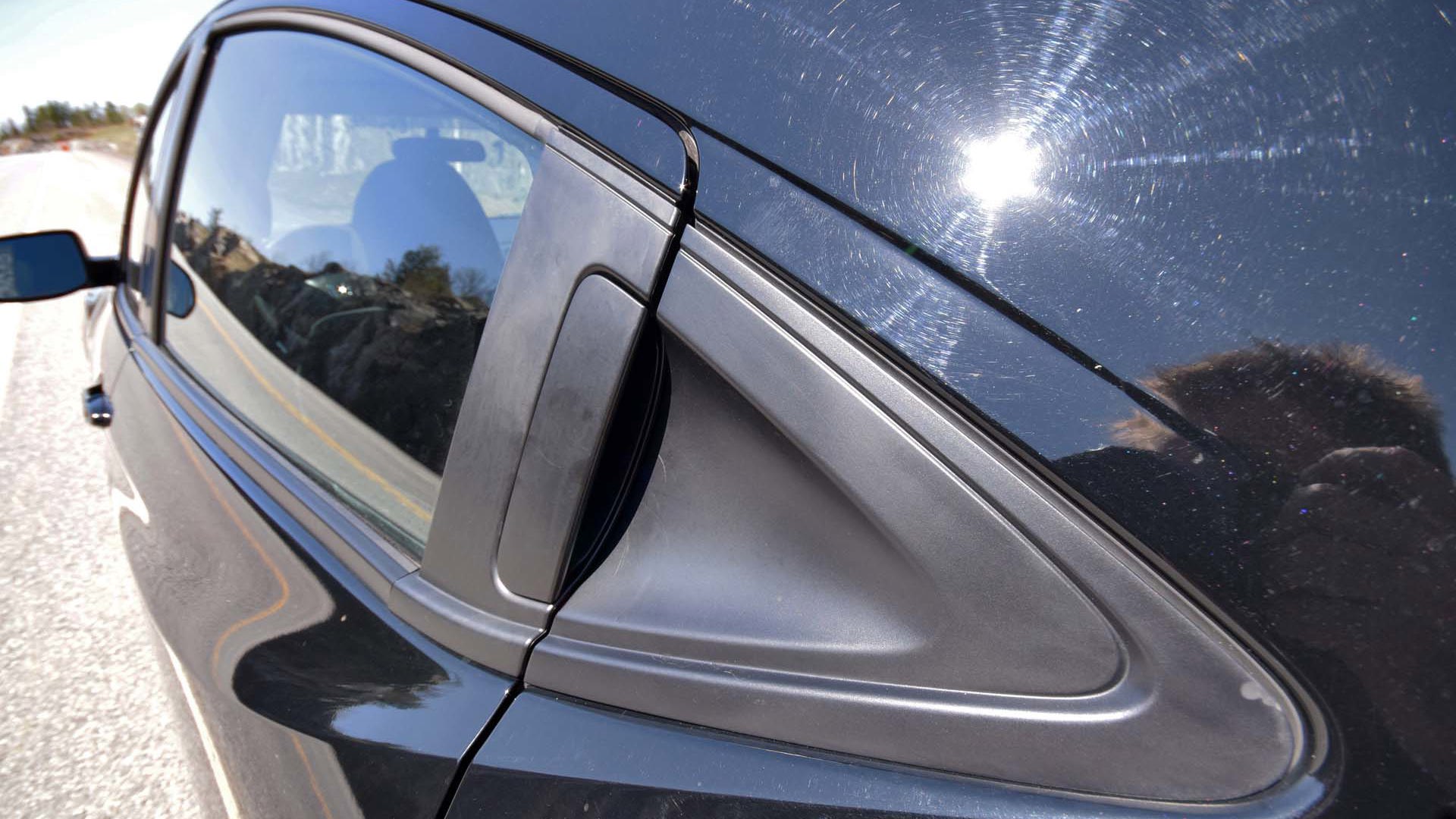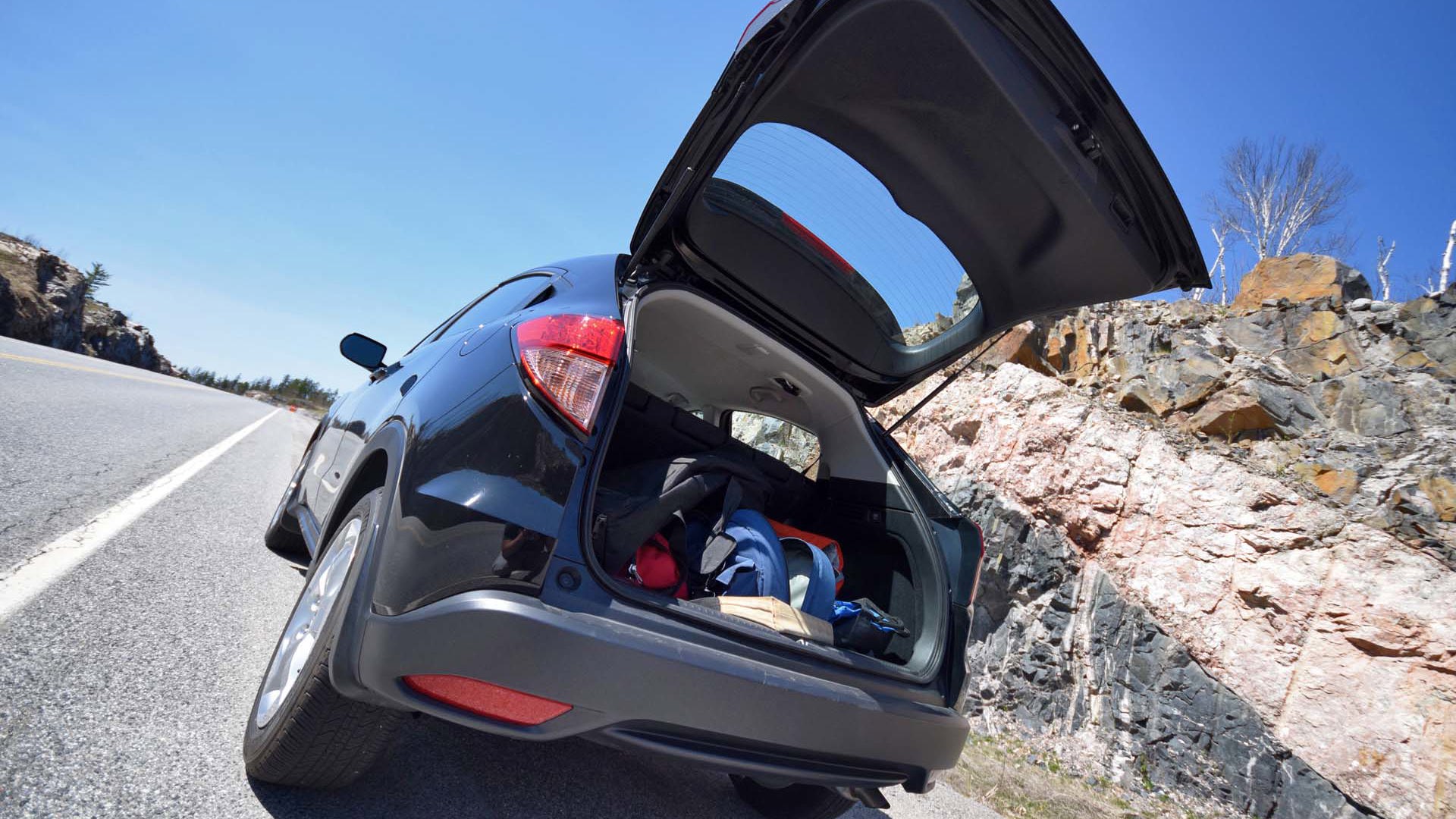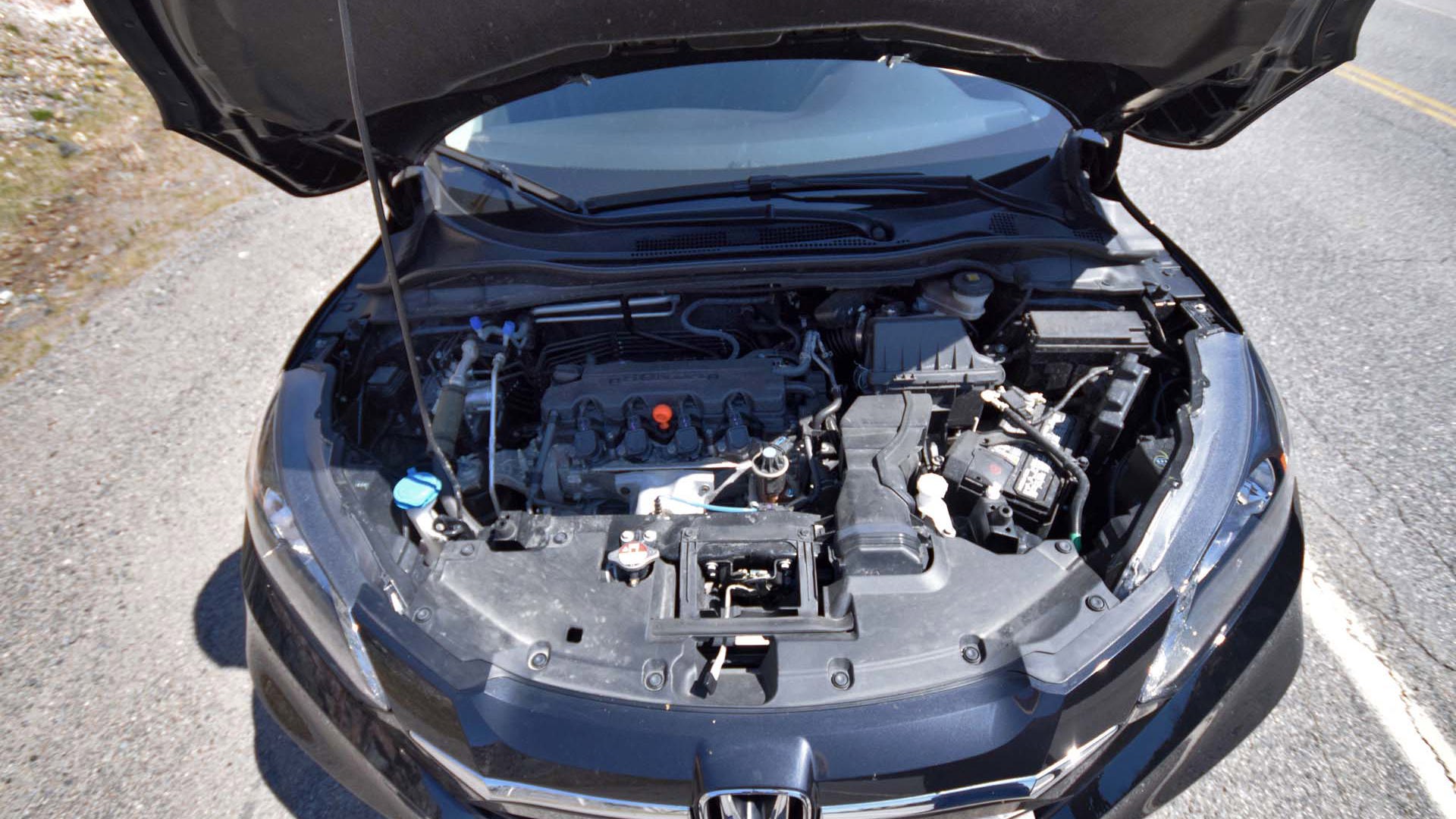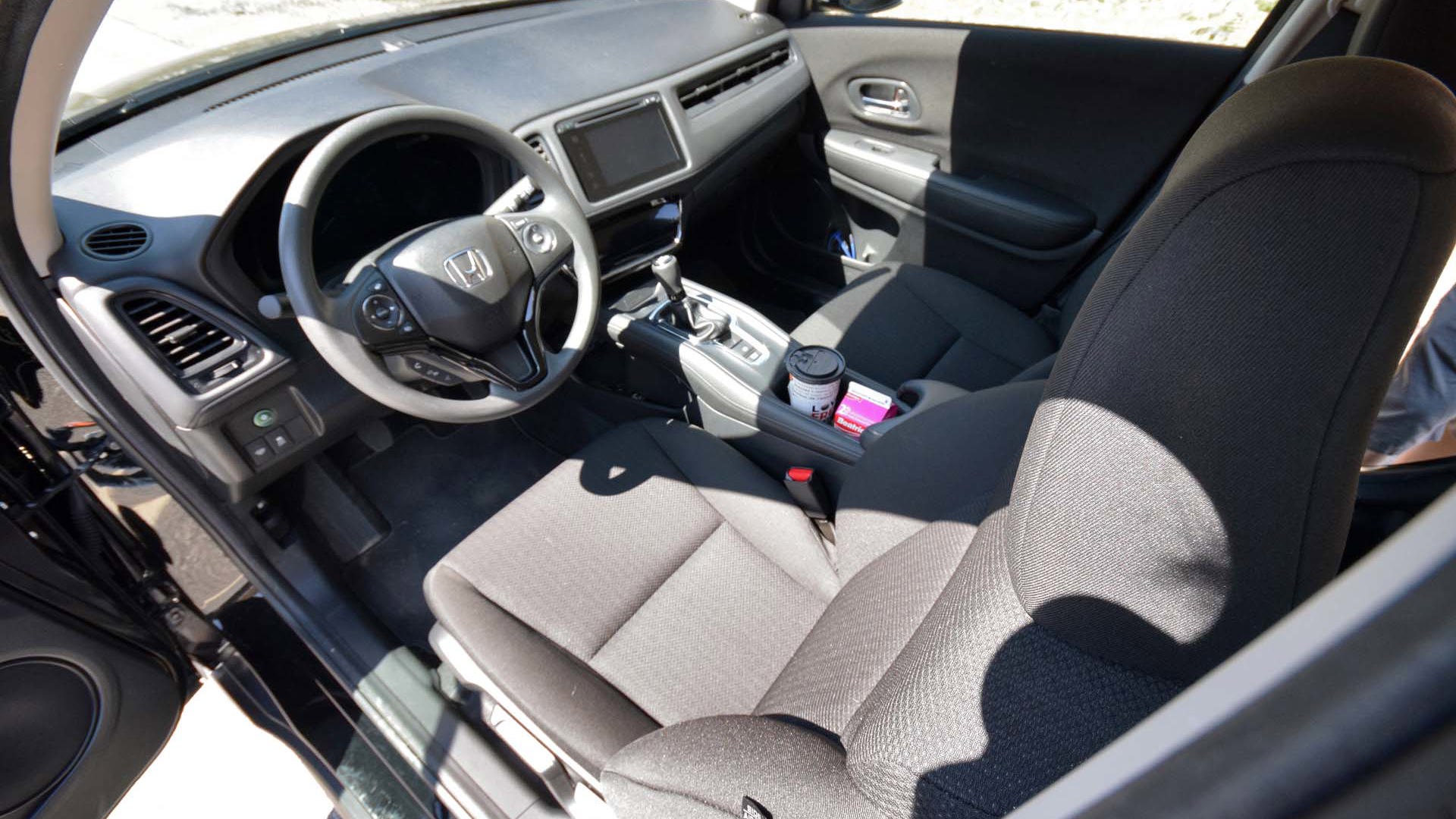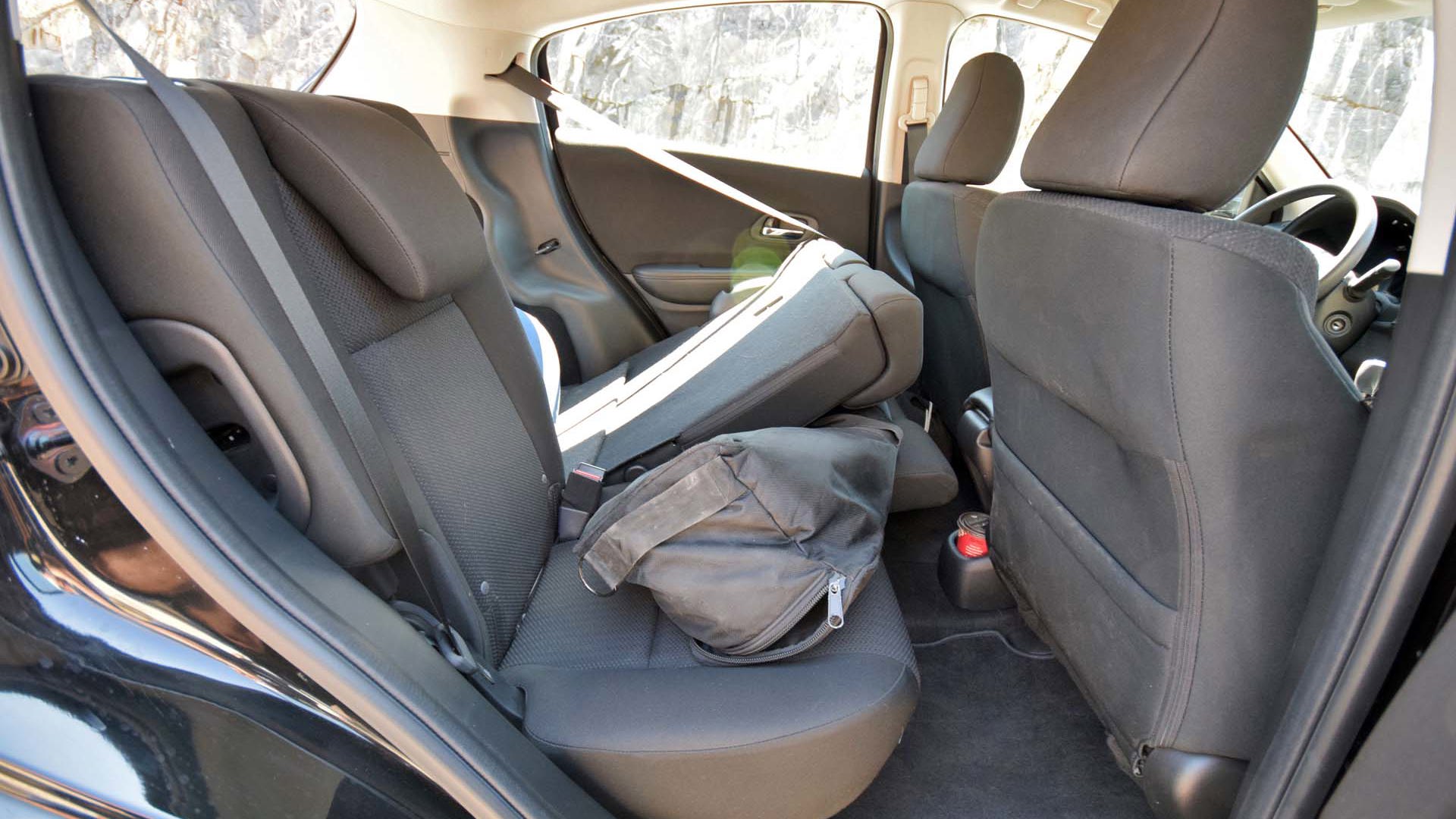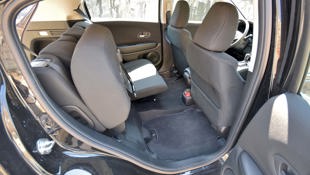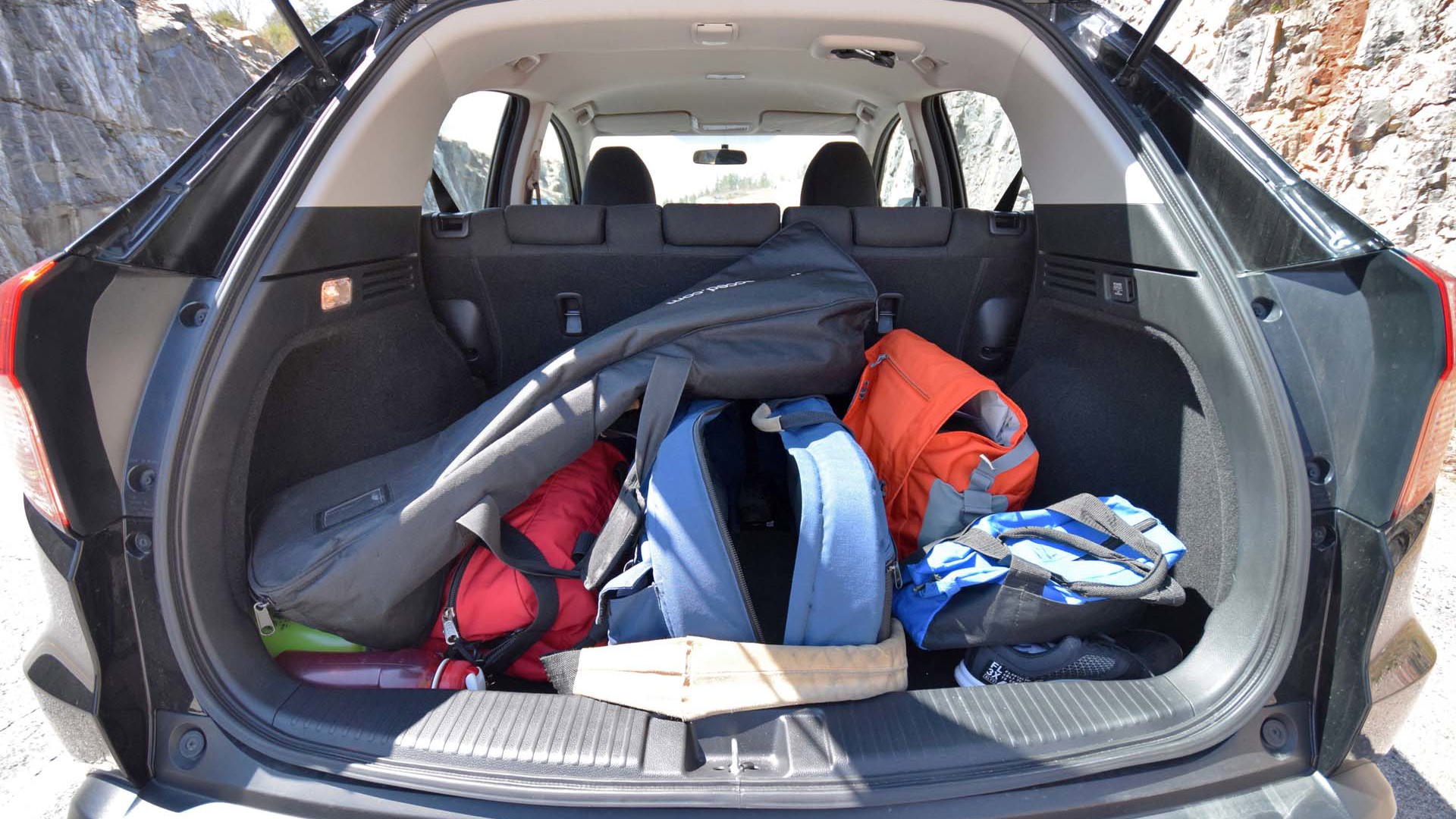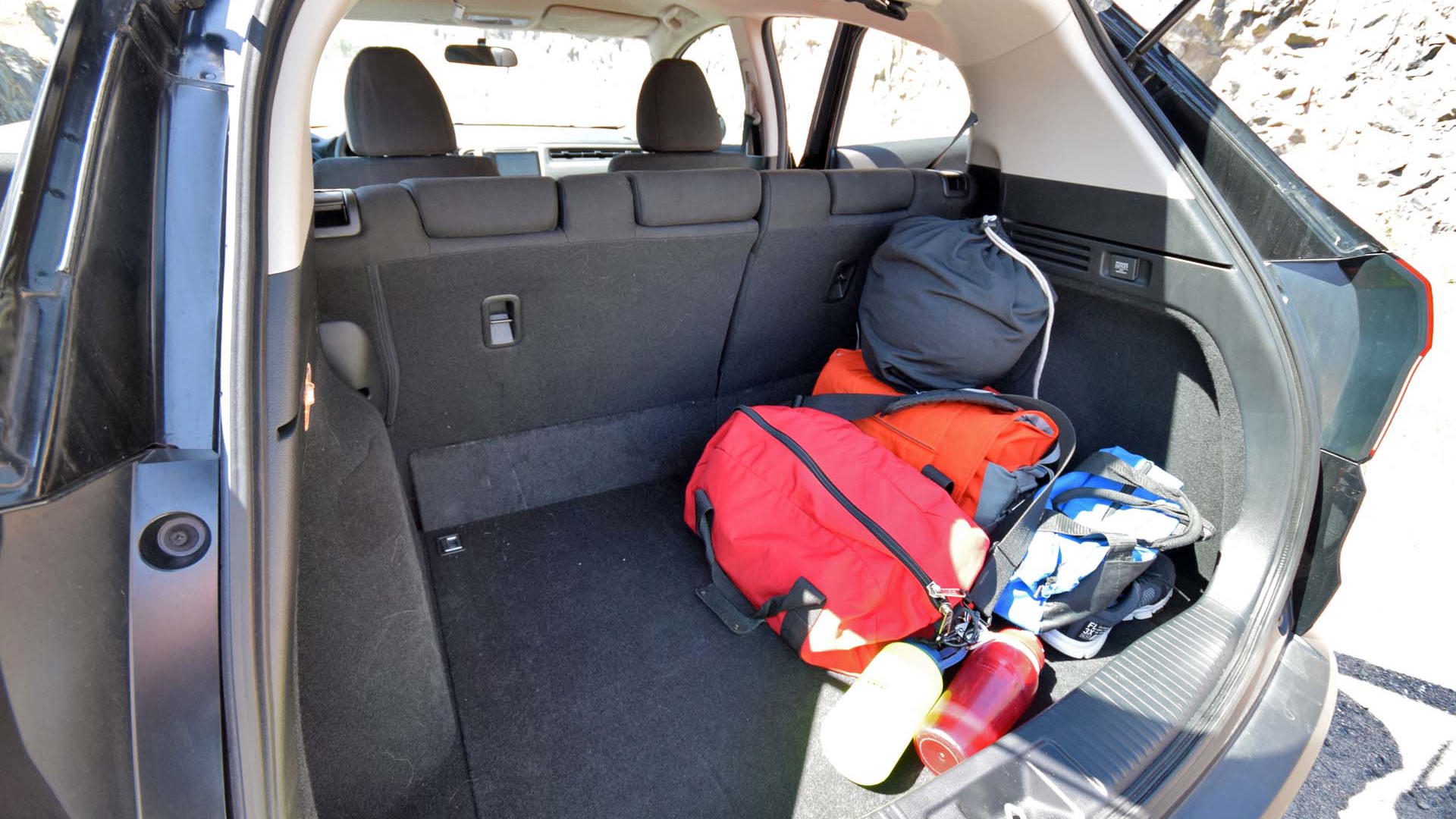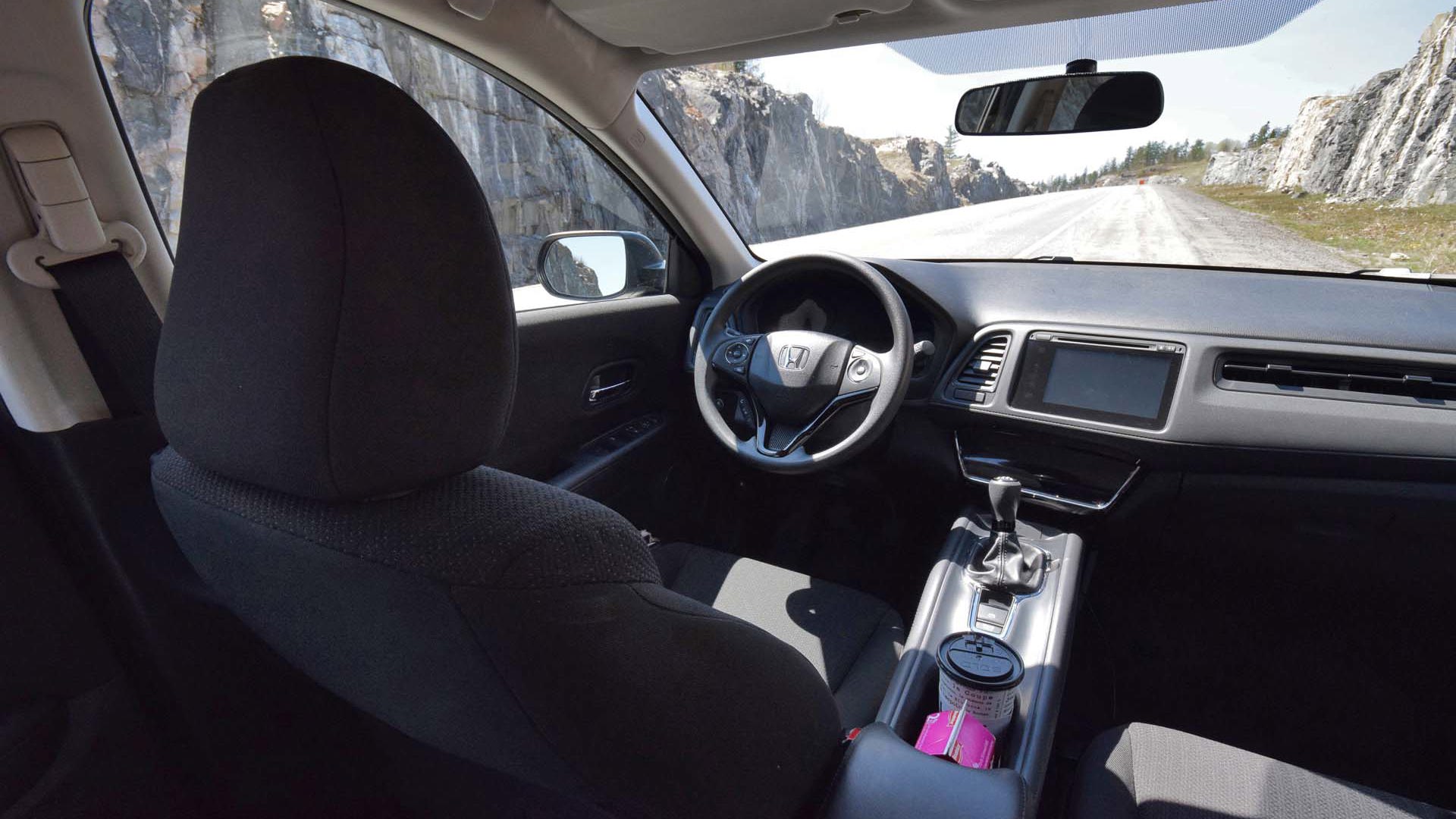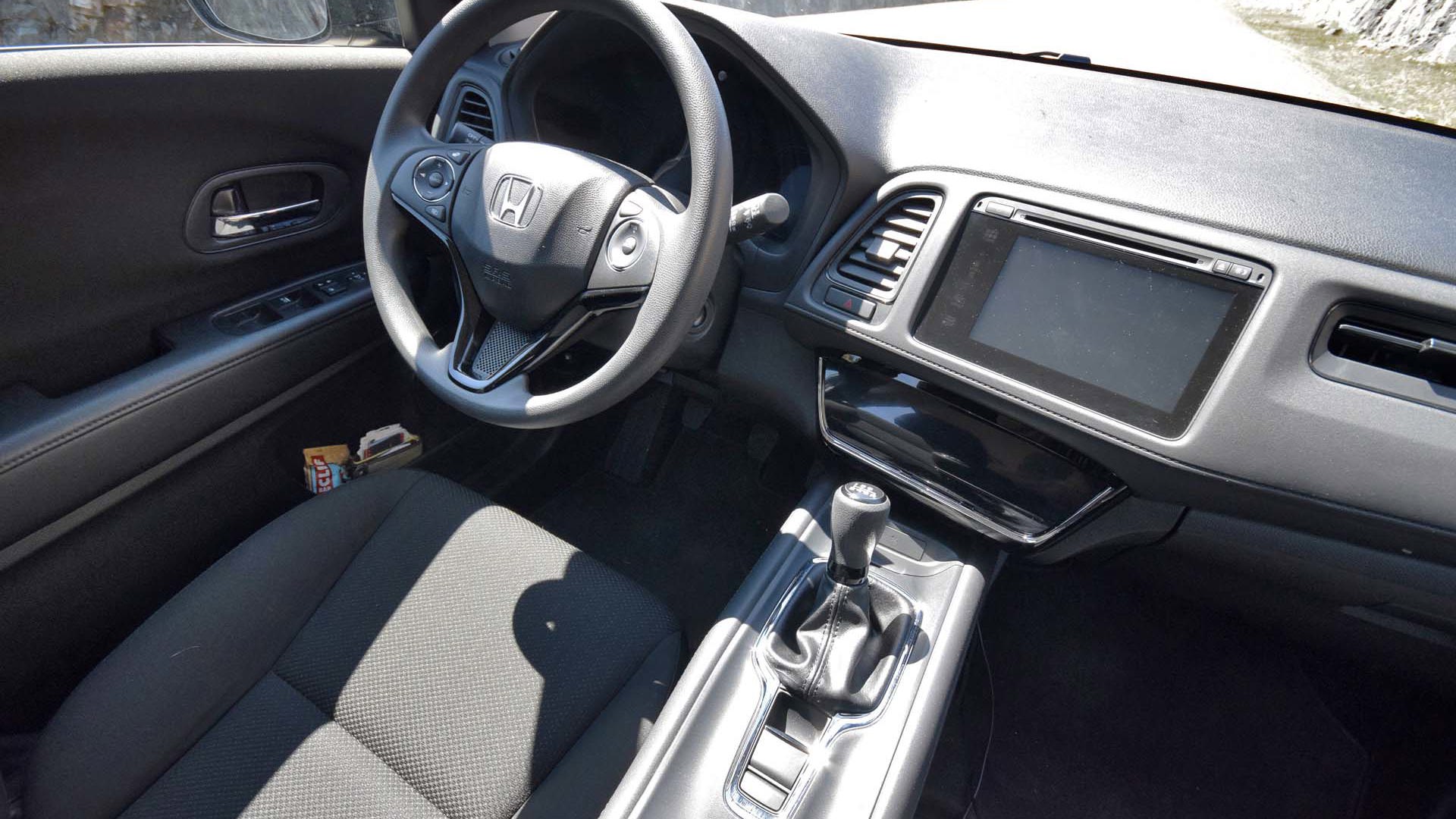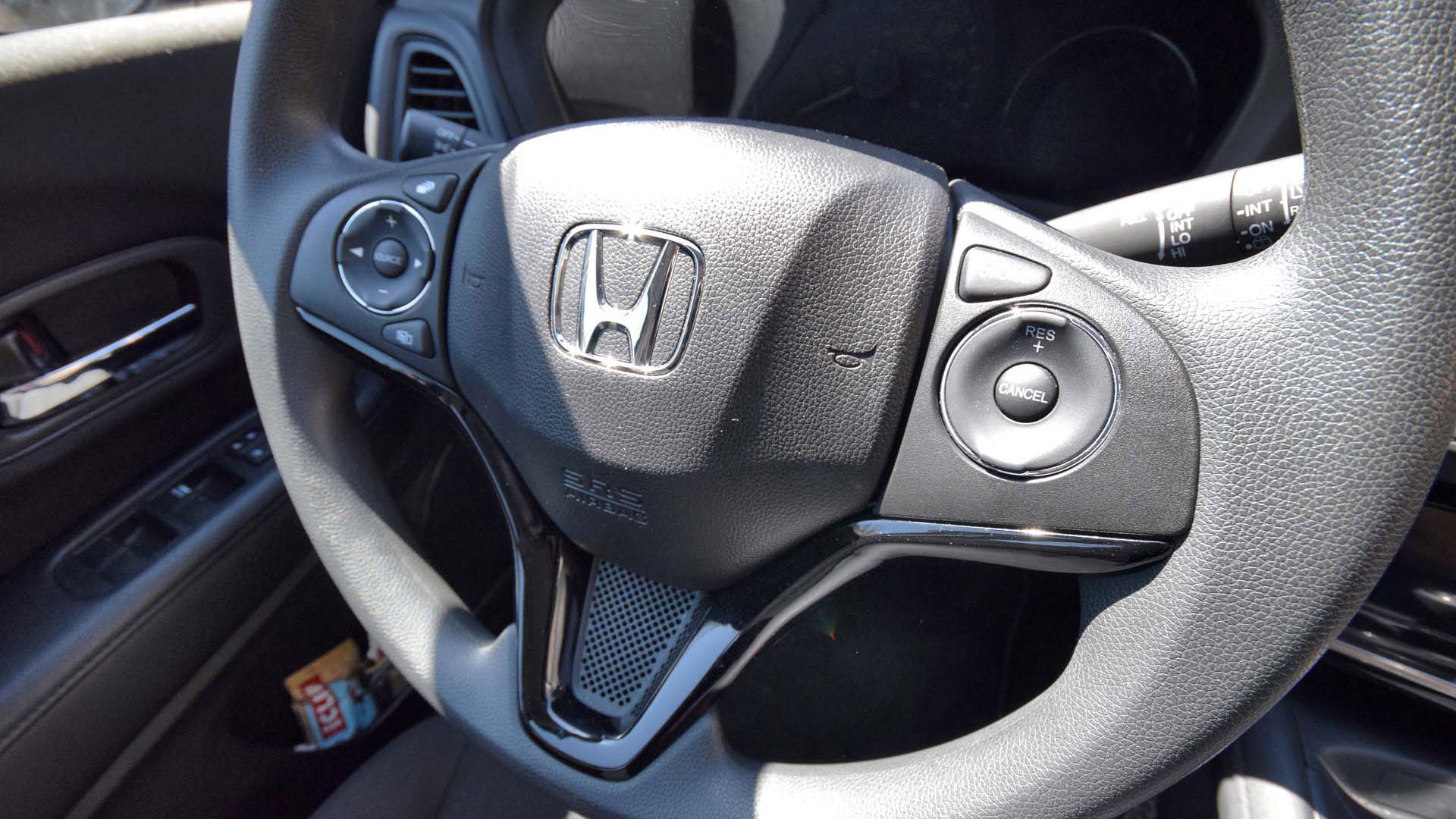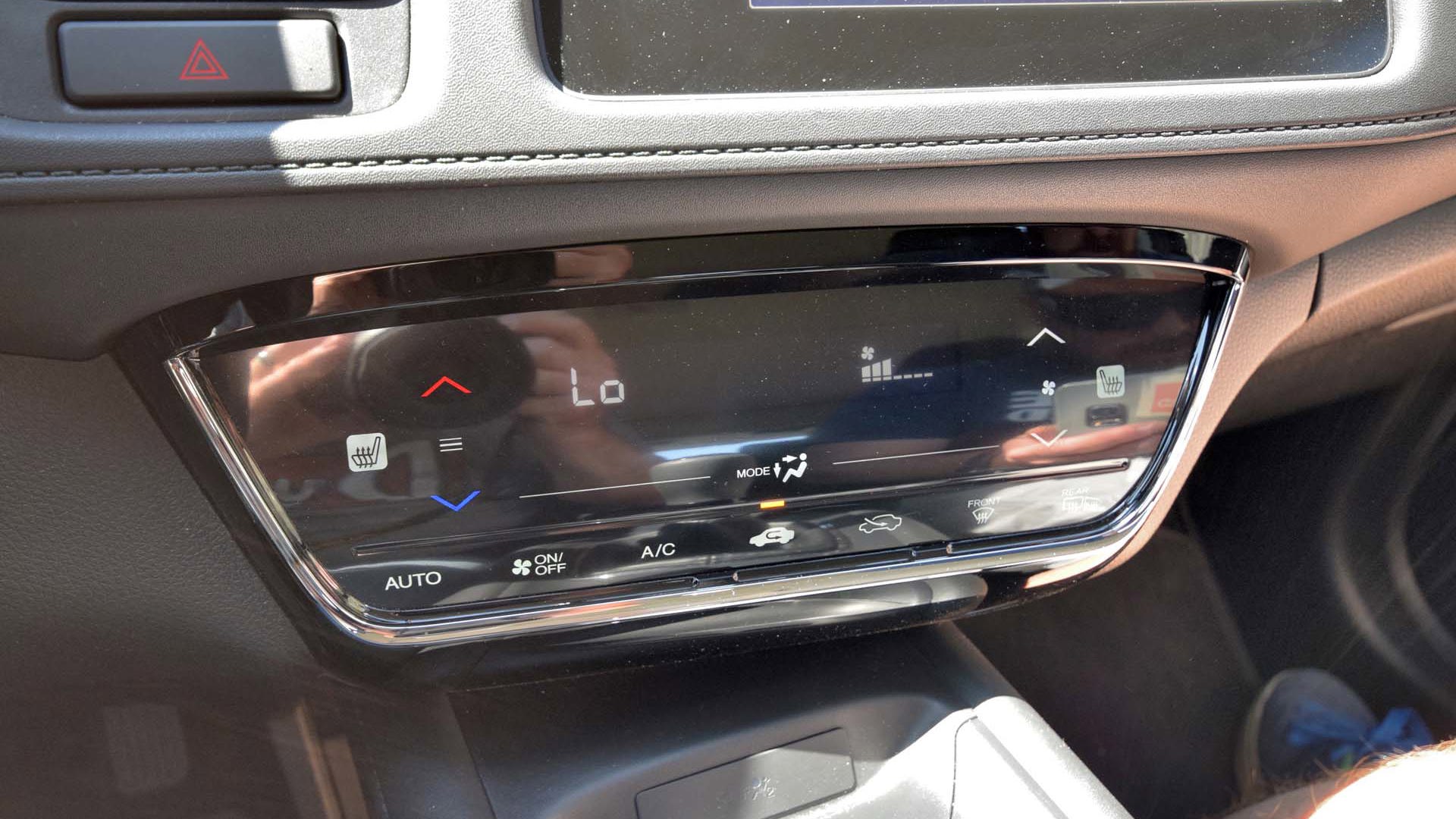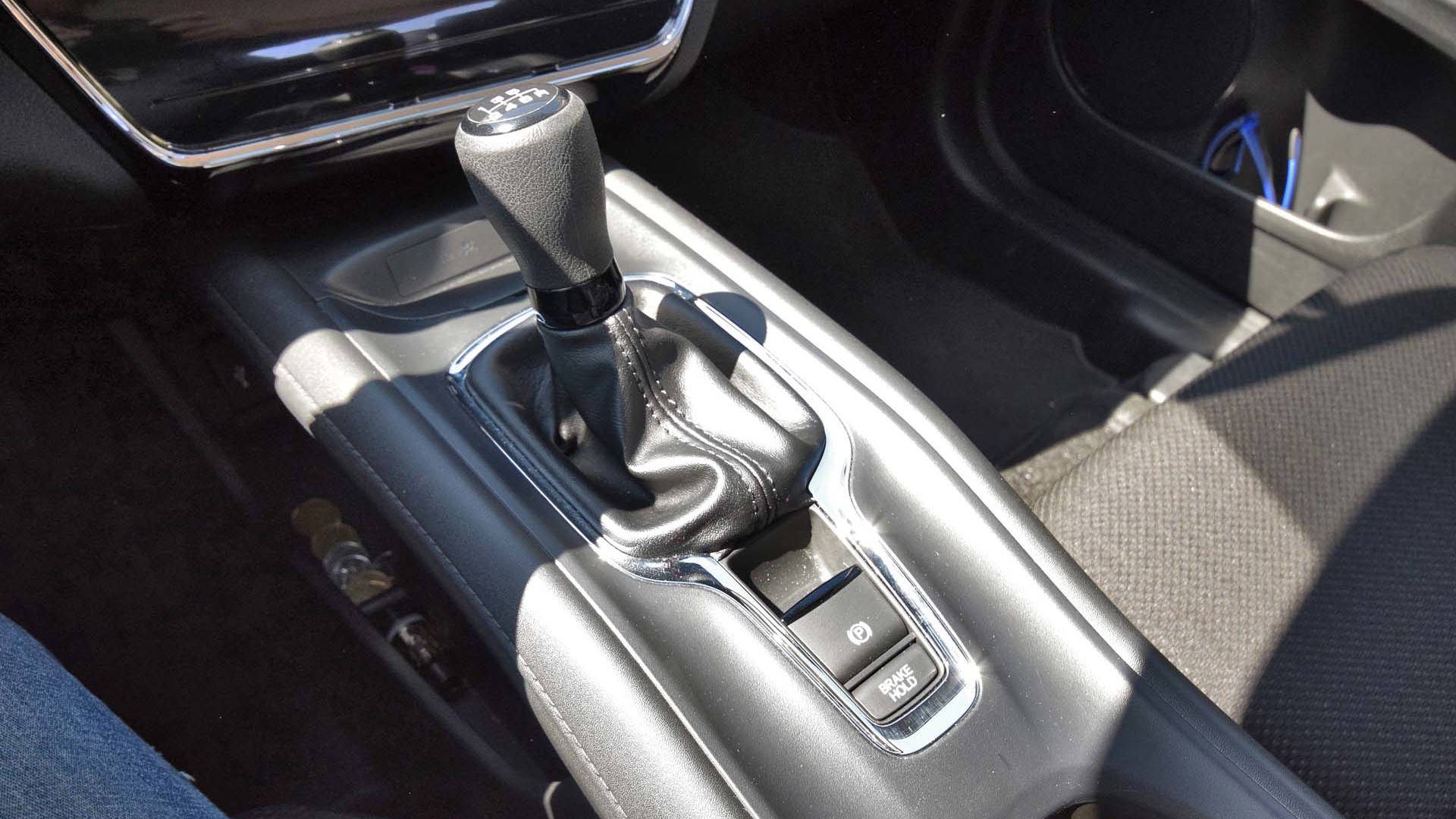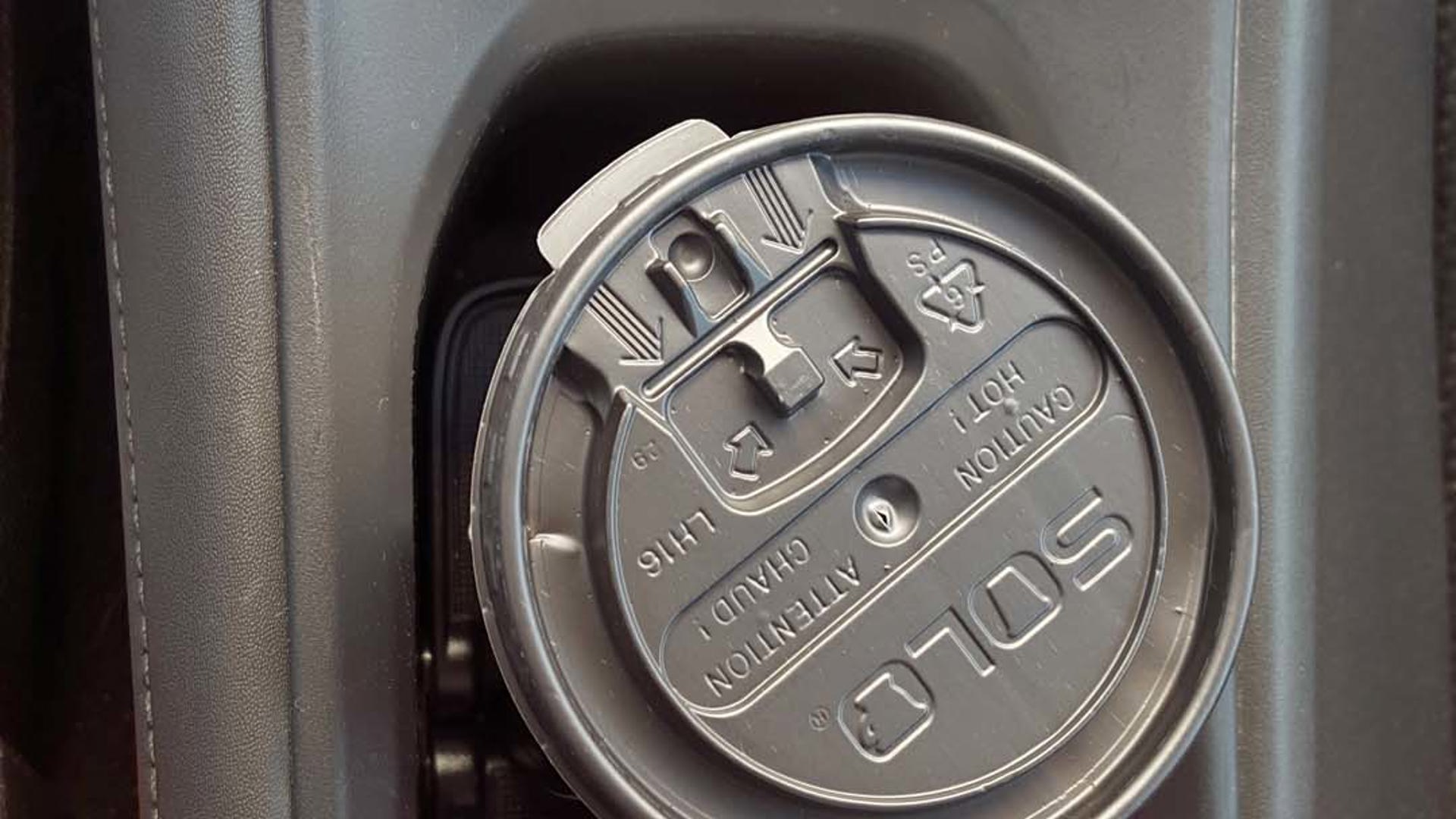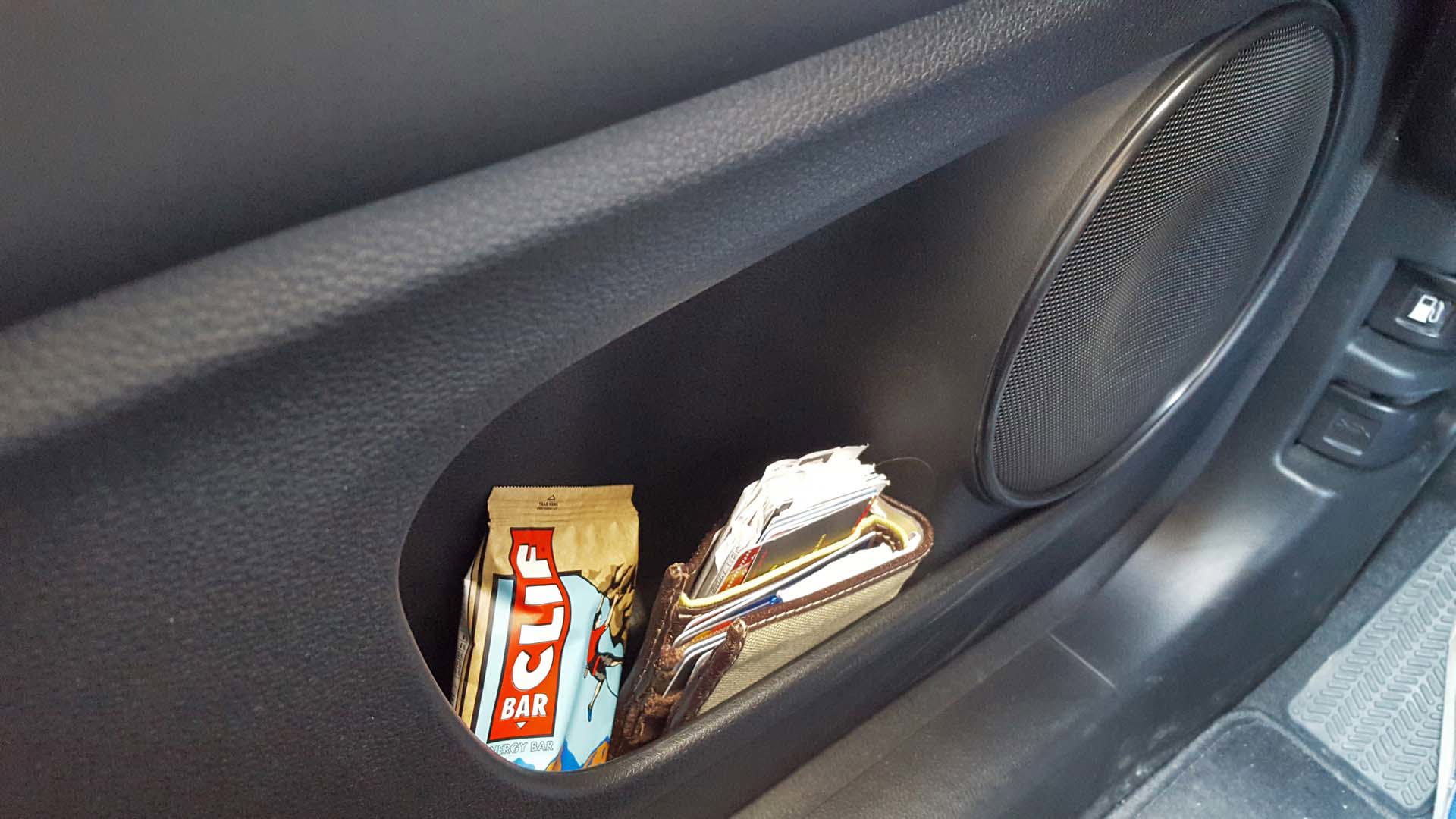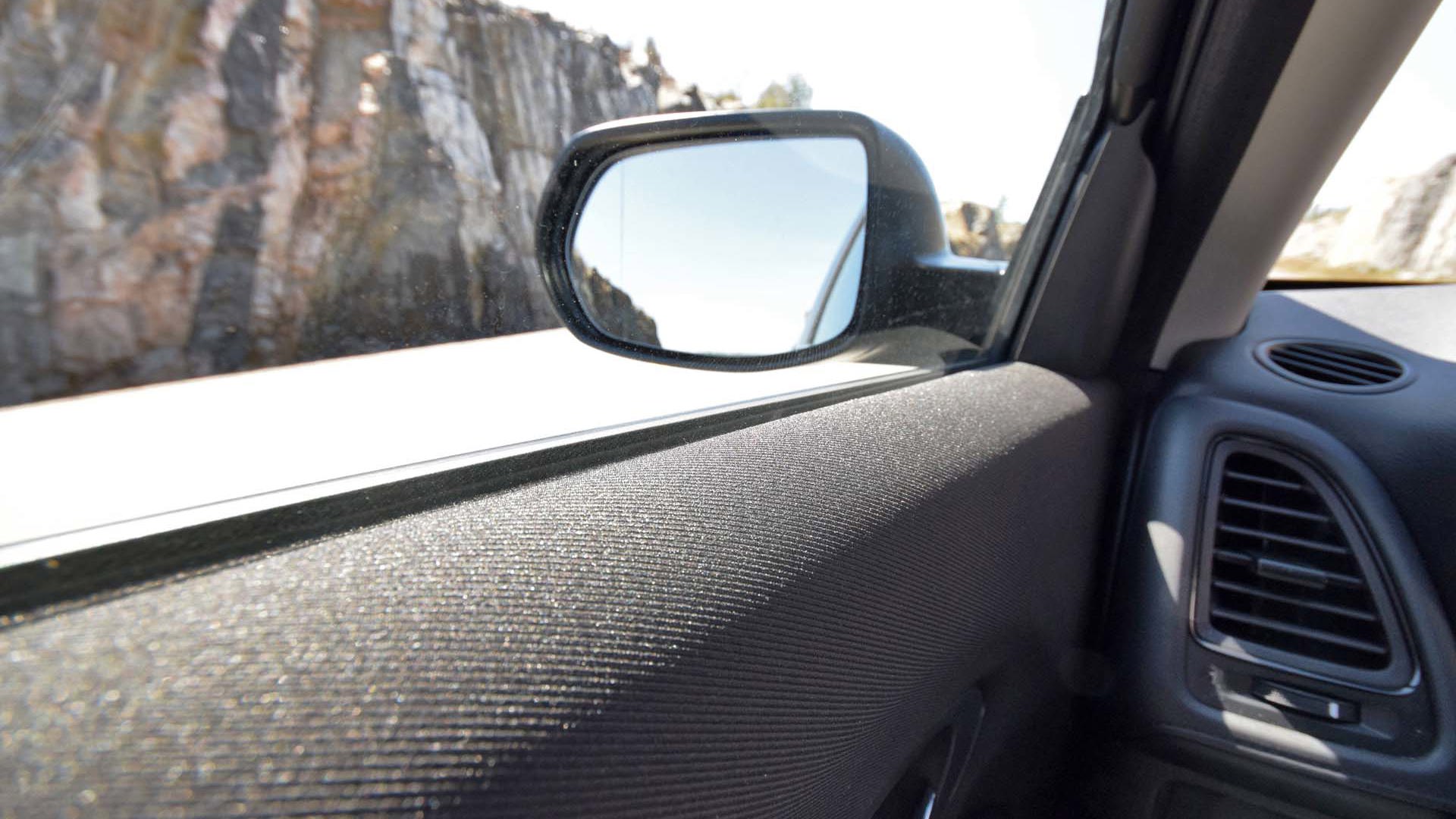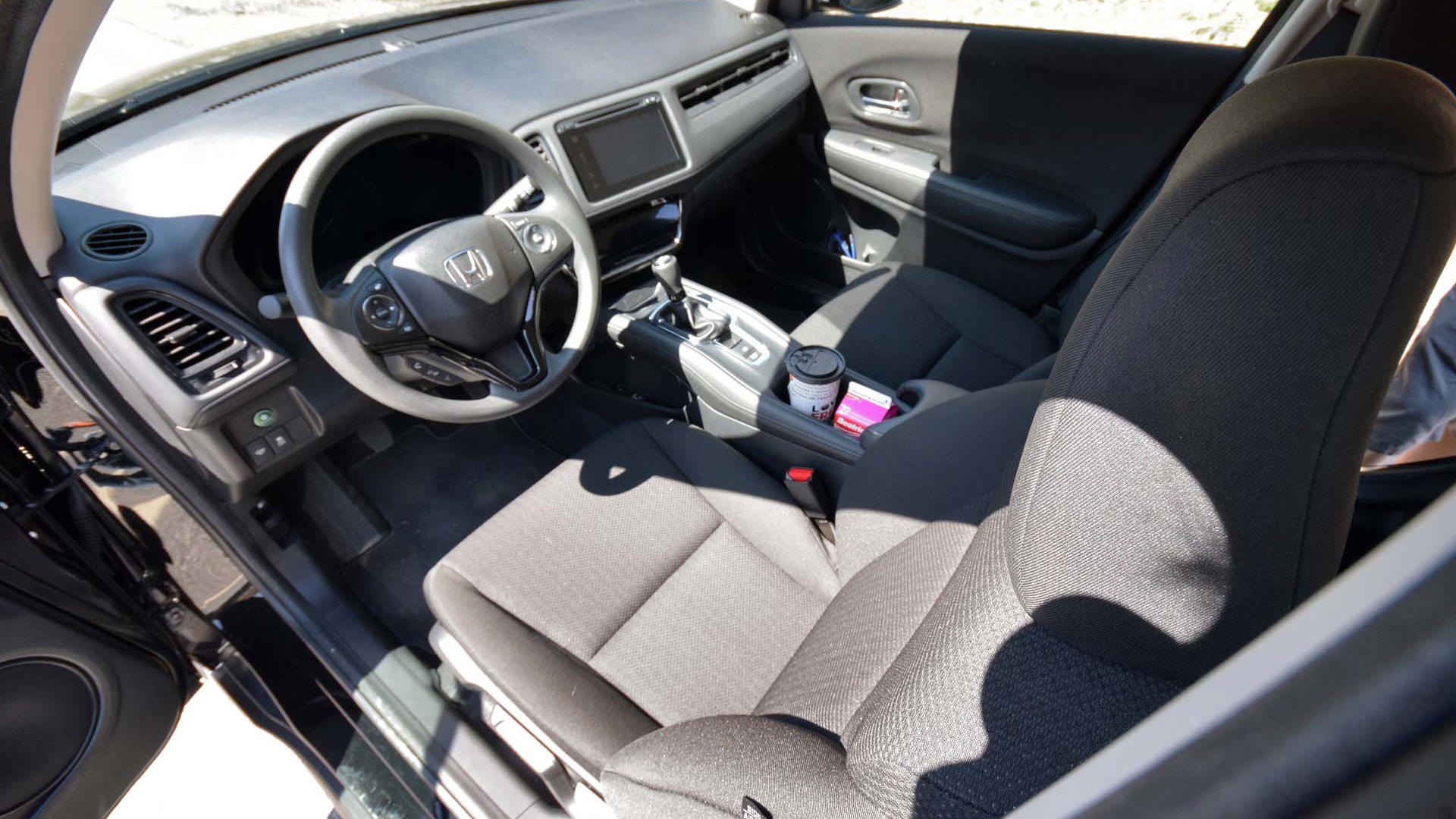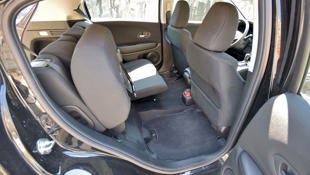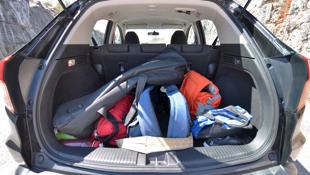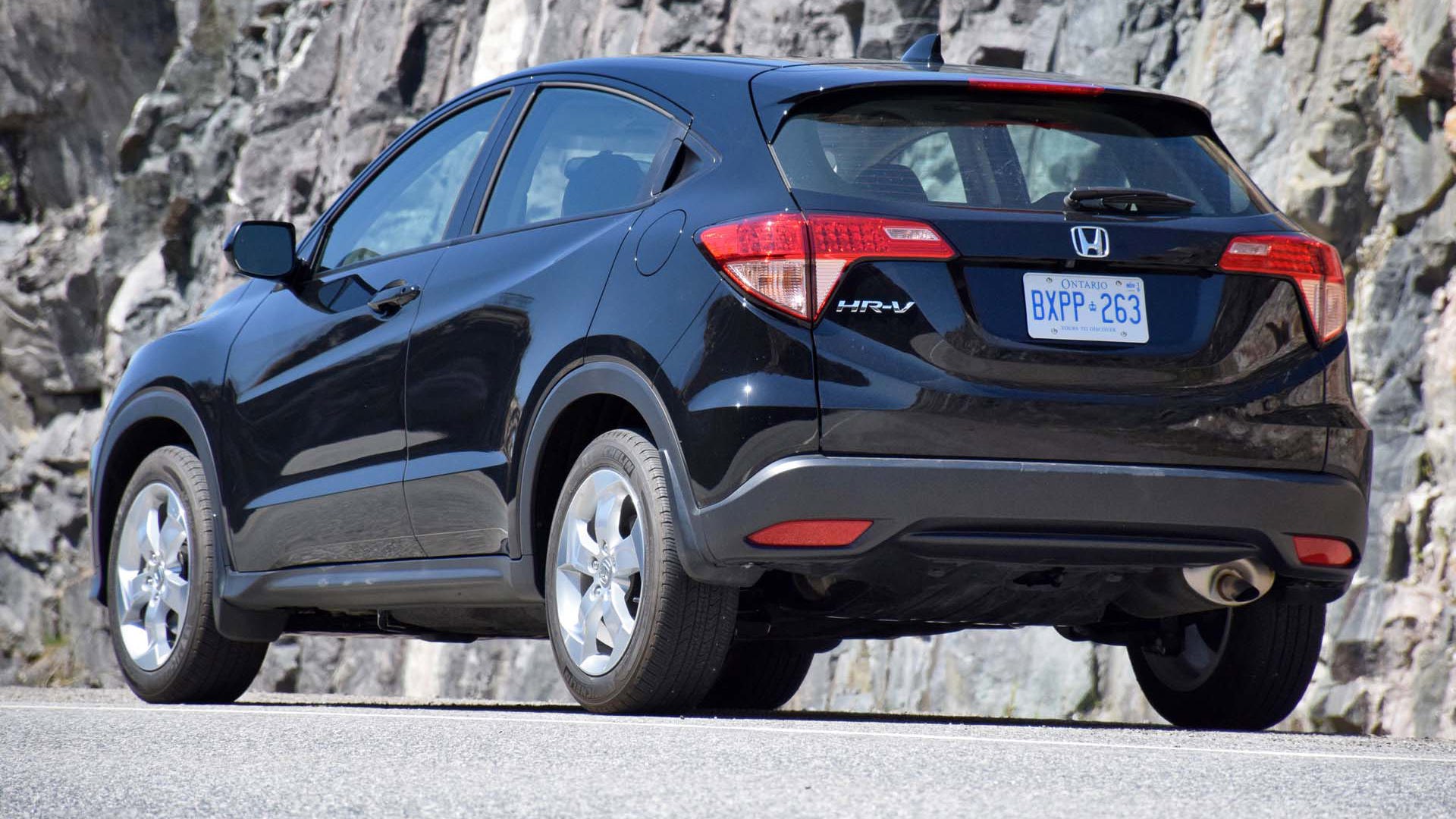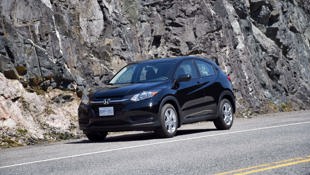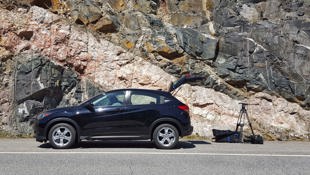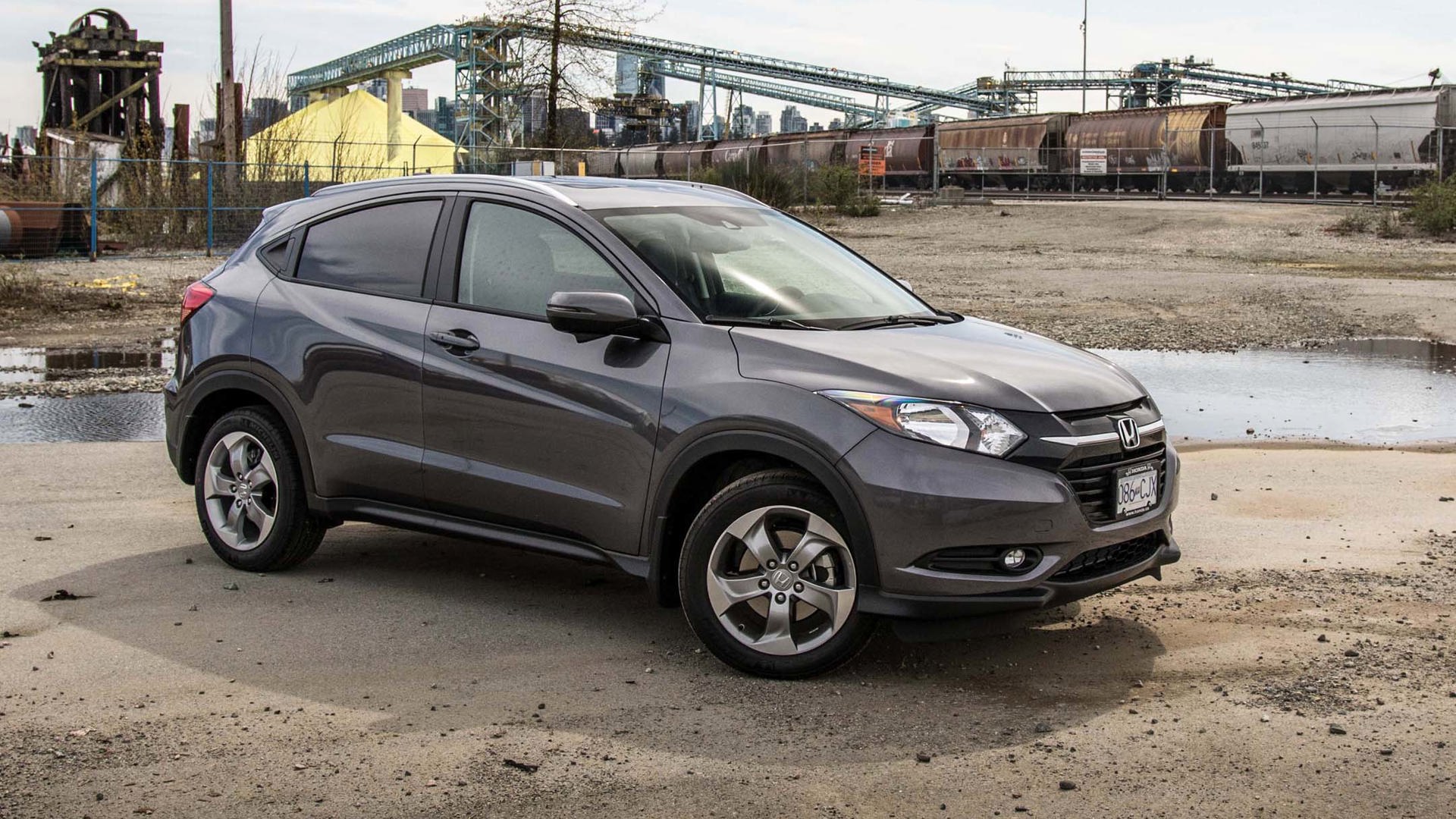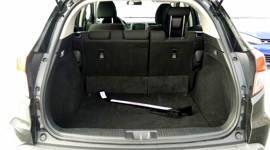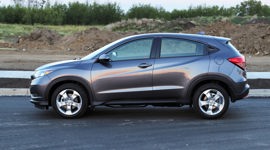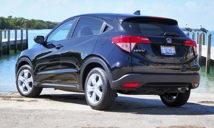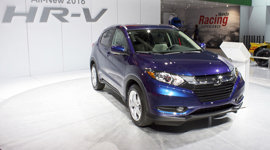 AutoTrader SCORE
AutoTrader SCORE
-
EXTERIOR STYLING8/10
-
INTERIOR6/10
-
PERFORMANCE8/10
-
COMFORT8/10
-
FUEL ECONOMY8/10
What spam is to meat, the crossover is to automobiles. A mishmash. A mashup. A compilation of parts and segments and pieces, less appealing individually, but more appetizing when blended together into a delicious, gelatinous concoction.
As an alternative to a bigger crossover, HR-V ticks all the right boxes for a confident driving experience, without the heavy fuel use and dumpster-like handling.
The Honda HR-V is one such crossover. It’s Honda’s latest, and one of the market’s newest small-crossover offerings – taking a place between the Fit and the CR-V in Honda’s lineup (with the upcoming five-door Civic fitting in there, somewhere, when it launches).
HR-V looks distinctive, unique, and even a little rugged – with a tallish stance, its own take on the crossover-coupe shape complete with concealed rear door handles, and suspension components peeking out from beneath the bottom when you’re sitting behind it in traffic. The ride height is elevated, but still car-like. All-Wheel Drive is available, too. As an alternative to a bigger crossover, HR-V ticks all the right boxes for a confident driving experience, without the heavy fuel use and dumpster-like handling.
Off the bat, though HR-V’s styling isn’t as upscale as some of the segment’s offerings, interior spaciousness and cargo hold usability blow competitors like the Mazda CX-3 out of the water. As Honda utility vehicles tend to, the HR-V offers up space aplenty, and especially in the cargo hold on the tester, with a low load floor, stretched-to-the-edges design and tall-to-the-rear shape for maximum carrying. Note that opting for AWD, which wasn’t present in the tester, reduces cargo capacity slightly.
Other notes on functionality include the full application of Honda’s MagicSeat system, a la Honda Fit, which allows rear seat bottoms to flip up, making an excellent lounge space for a canine, or clearing room for large or clumsy items like bicycles, flat-screen TV’s, or a week’s worth of camping coolers or other supplies. Also, like the Fit, HR-V’s rear seatbacks fold fully flat in a jiff, turning it into a sort of miniature cargo van. As with its stablemates, there’s more space and flexibility on board than you probably think.
Ride quality is an asset. Relative to many competitors, noise levels are kept reasonable to highway speeds and beyond, ride quality is consistently solid, dense and free of flimsiness on even rougher roads, and HR-V’s comfort doesn’t fall much to the mercy of what’s passing beneath. It feels dialed in -- a little sporty and semi-stiff, but without crashing into bumps and potholes, and comfortable on a highway cruise, but without undue squishiness. The HR-V’s ride, driven around the crumbling roads of Sudbury, Ontario, reminded me of the Subaru Crosstrek, which is a very good thing.
Steering is nicely matched to the suspension: a touch quick and heavy on the highway, but not hyperactive or nervous. At around-town speeds, it lightens up a measure, facilitating laid-back weaving through traffic, and in and out of parking lots. At parking speeds, more lightness, plus a tidy turning circle and back-up camera (standard), help add confidence in tight quarters.
A 1.8-litre VTEC engine spins up 141 linear horsepower on all units – it loves to spin fast while performing consistently across its rev-range, operates with a tasteful and eager-to-please growl when pushed, and remains mostly quiet when driven gently. In the latter case, performance is sufficient, if merely adequate, but conducive to light-footed around-town driving. A driver-selectable ECON mode trades away some responsiveness for an easier time achieving thrifty mileage, though your writer achieved better than 8 L/100 km, measured by hand, without using it. Weirdly, that’s a snudge better than I achieved in a CVT-equipped Honda Fit, a month or so earlier. Take those figures as you will, as yours will vary.
For versatility however driven, a refined demeanor at all times, and an eager-to-please character when driven hard, this powerplant stands out as a favourite in the segment.
Drivers take it in from a cabin that’s as much a mishmash of parts and segments and aspects as the crossover genre itself. On the plus side, the barebones tester got a lengthy list of highly relevant standard feature content touches: automatic climate control, Bluetooth, steering wheel controls, touchscreen infotainment system, heated seats, back-up camera, and the like. Some delightfully upscale touches were included too – the glossy, chrome-trimmed climate control touch pad being the most impressive amongst them. The six-speed shifter, mounted on the swooping center console, has more chrome trim, and a small parking-brake switch behind it. Add in some stitching, and this barebones HR-V has an upscale atmosphere that helps defy its position in the lineup.
At-hand storage is adequate, or even better, if you use the pass-through storage opening beneath the centre console.
On the downside, numerous quirky interior attributes dull the appeal slightly. The entire passenger side dash, for instance, is covered with a strange air duct that looks like something out of the spaceship from 1986’s Flight of the Navigator, when they were trying to make things look futuristic, but it was 1986. Cupholders are square in shape, and they fit a small milk carton perfectly, should you be into chugging dairy on the move. If you prefer a round-shaped paper coffee receptacle, it’ll just go slapping around and likely unload its contents into the cupholder.
Rear seats are roomy enough, and the doors open wide. Though – presumably to facilitate the unique shape and rear wheel wells – access through the rear doors can be cumbersome and tight for the legs and feet of occupants, especially tall ones. Door panels are cloth, which is fussy to clean, and leggier front passengers often complained about the awkward shape to their foot-well, which is restrictive in shape, and not ideal for stretching out.
For some, and especially Honda Fit shoppers, the compromises should be easy to accept.
Why? Because, in several key ways, HR-V makes a more compelling alternative to the Honda Fit.
Pricing sees the base-model HR-V coming in tightly against the price of a loaded Fit, like the EX-L Navi unit I recently reviewed.
Here’s the sticky for this mini comparison: Fit EX-L Navi with a manual transmission costs $800 less than the base-model HR-V tested here. Both are front wheel drive, both have a six-speed stick, both have Bluetooth and steering-wheel mounted controls and automatic climate control and a back-up camera. And though the loaded Fit, at a very comparable price, gets you more features, I’d happily trade them in for the HR-V’s superior driving experience.
The compromise would see me sitting on heated cloth, not leather, which I’m impartial to. I’d have no navigation system, but the one in my phone is better anyways. At this price, HR-V has no LaneWatch camera system, but I have mirrors, windows and a neck that rotates about the top of my torso. Finally, HR-V has an old-fashioned key you insert and twist, not a push-button transponder unit. No biggie.
Give up those features, and an extra $798 dollars, and you’re driving a vehicle that feels more substantial and dense, turns in a quieter and better-sorted rough-road ride, packs the better part of 200 litres more cargo space, and has a considerably more refined and less noisy engine. Best of all, there’s no sacrificing all of the functionality that make the Fit an excellent cargo hauler – thanks to fold-flat rear-row seats, the MagicSeat system, and a low load floor.
And there you have it: with some well-sorted dynamics, a great set of standard features, excellent ride quality and Honda’s interior packaging wizardry in full force for maximum versatility, HR-V’s quirky interior and minor gripe-points should prove minimal for many shoppers, and especially those considering a comparably priced Fit. If you’re driving one, be sure to drive the other too.
| Warranty: 3 years/60,000 km; 5 years/100,000 km powertrain; 5 years/unlimited distance corrosion perforation; 3 years/unlimited distance roadside assistance; 8 years/160,000 km hybrid components Competitors: |
| Model Tested | 2016 Honda HR-V LX 2WD |
|---|---|
| Base Price | $20,790 |
| A/C Tax | $100 |
| Destination Fee | $1,695 |
| Price as Tested | $22,585 |
|
Optional Equipment
None
|
|

